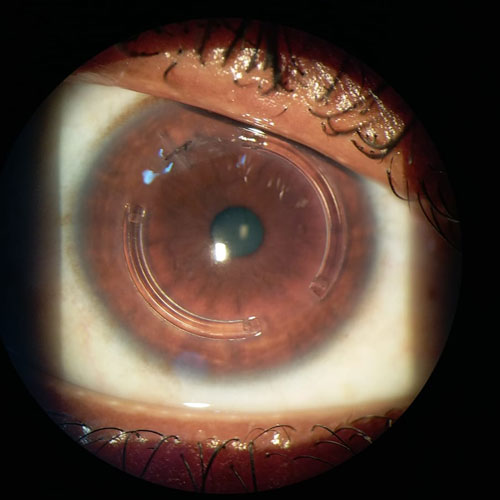Keratoconus Managment in Hyderabad
- Home
- Services
- Keratoconus Managment
Keratoconus is a condition where the cornea of a person is weak and starts bending. This progressive bend leads to steepening of the cornea which in turn results in very high myopia (in common terms: high glass power in Minus). Apart from high no the quality of vision also deteriorates which means even if you wear the glasses the vision is not clear.
This is a progressive disease. So, the motive of the keratoconus treatment in Hyderabad is to stop the progression and also to restore the vision lost due to excessive steepening.
Treatment in keratoconus is not done in a cookie cutter approach. Every patient and every eye is different. And every eye requires a treatment by eye specialist in Kukatpally which can give the best outcome.
There are multiple modalities which can be used to treat keratoconus
- Corneal cross linking: this is done to stop the progression of the disease
- INTACS: these are ring segments which are implanted in the cornea to flatten the steep cornea to improve the vision.
- ICL: ICL implantation is done to improvise vision after the stabilisation of disease.
- Contact lenses: patients who do not benefit from glasses and who have extreme distortion of vision usually benefit from contact lenses
- Corneal transplantation: this is usually the last resort. Corneal transplantion have excellent outcome in keratoconus.

So if you are a person seeking treatment for keratoconus, discuss the treatment with your ophthalmology doctors in Banjara Hills in detail with respect to multiple modalities and the time period required for the recovery and visual outcome. After the Keratoconus surgery in Kukatpally, itusually takes around 3-6 months for patient to see the results of the treatment. So it of prime importance to be patient and also maintain regular follow up with the treating physician.
Signs and symptoms of keratoconus may change as the disease advances. They include
- Blurred or mutilated vision
- Increased affectability to splendid light and glare, which can cause issues with night driving
- A need for regular changes in eyeglass prescriptions
- Sudden declining or blurring of vision
These variables can expand your chances of creating keratoconus
- Having a family background of keratoconus
- Rubbing your eyes enthusiastically
- Having certain conditions, for example, retinitis pigmentosa, Down disorder, Ehlers-Danlos condition, roughage fever and asthma
Corneal cross linking
Corneal cross-linking treatment in Banjara Hills utilizes bright light treatment that may slow or prevent the keratoconus from deteriorating. In this technique, the patient additionally gets local sedation. Drops of a medication containing riboflavin (nutrient B2) are put into the eye for up to 30 minutes. The eye is then presented to a bright light for as long as 30 minutes. The corneal cross-linking system is intended to reinforce the connections between the cornea's collagen fibers and encompassing proteins, which can help shield the cornea from steepening.
INTACS Implantation
Implantable ring sections are small devices that are embedded into the cornea to improve vision or make it simpler to fit a patient with contact lens. In this technique, which is performed under local sedation (the patient's eye is desensitized with drops), the eye specialist in Kukatpally makes directs in the cornea and supplements the rings into these channels. The rings help to straighten the cornea and mostly right the cone shape brought about by the keratoconus.
Implanatable collamelar focal point (ICL) Surgery
The Implantable Collamelar Lens (ICL) is an advanced, thin, clear lens that capacities comparatively to a contact lens, anyway it is precisely embedded into the eye. The ICL can't be felt while in the eye, requires no support and can be taken out if necessary. The ICL doesn't replace your characteristic focal point, however is embedded before your natural focal point and behind your iris (the colored part of the eye). The ICL process is a low risk, long haul arrangement and, accordingly, is a decent alternative for some patients, particularly those younger than 40. The method is regularly suggested by ophthalmology specialists in Hyderabad for patients with high prescriptions for either short sightedness (myopia) or long-sightedness (hyperopia), in light of the fact that frequently the cornea isn't sufficiently thick to be dealt with securely with laser eye medical procedure techniques, for example, LASIK or ASLA.



